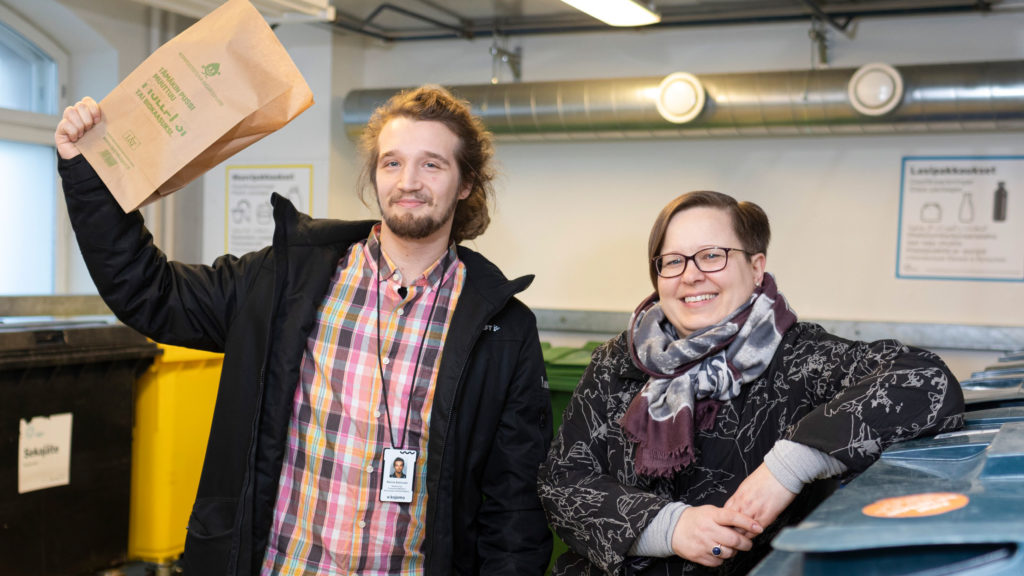Kojamo participated in the Biorent project funded by the Ministry of the Environment, which was was aimed at enhancing the sorting of biowaste and reducing food waste at rental properties.

Kojamo offers many kinds of support to residents to help them sort waste and reduce food waste. We provide advice and guidance to residents, organise waste management according to the needs of each property and keep the waste facilities as tidy as possible. Depending on the property, residents may also be provided with biowaste bags, services to pick up waste for transportation to Sortti stations as well as recycling containers. In 2019, plastic collection containers were introduced at more than a hundred Kojamo properties.
“We want to make sorting and recycling as easy and convenient as possible for our residents, which will help reduce the volume of mixed waste, among other things,” says Head of Property Management Riina Linnas.
To obtain information on the effectiveness of various measures, Kojamo participated in the Biorent project funded by the Ministry of the Environment. The project, which was completed at the end of 2019, was aimed at enhancing the sorting of biowaste and reducing food waste at rental properties.
“Based on the project, the most important thing is to provide the residents with clear instructions and good facilities for sorting waste and to actively remind them about the significance of sorting,”
“Based on the project, the most important thing is to provide the residents with clear instructions and good facilities for sorting waste and to actively remind them about the significance of sorting,” says Technical Manager Reima Kettunen, who was in charge of the Biorent project at Kojamo. “The biowaste recycling rate increased substantially at the properties whose residents were provided with breathable biowaste containers, high-quality paper biowaste bags and a copy of waste sorting instructions.”
At the start of the project, waste was manually examined at the participating properties to determine what proportion of biowaste ended up in the biowaste container and how much biowaste ended up in mixed waste. The recycling rate at the properties was regularly monitored during the project. At the participating housing companies, the residents were actively communicated with on topics such as how to sort biowaste and how food waste can be reduced. In some of the properties, the lighting and general appearance of the waste collection point was improved. In some properties, new types of biowaste bags were distributed to the residents, an information event was arranged and the residents were invited to participate in a visit to a food waste restaurant.
In the Helsinkiregion, the Helsinki Region Environmental Services Authority HSY uses biowaste to generate electricity and composting material. Improving the recycling rate of biowaste has an impact on the environment as well as the costs of waste management. “The collection of mixed waste is the most expensive part of waste collection, and the costs also affect the costs borne by the residents,” Kettunen points out. “We can provide assistance and encouragement to promote recycling but, ultimately, it comes down to the residents. The future will be brighter if we can minimise the amount of mixed waste,” Kettunen adds.